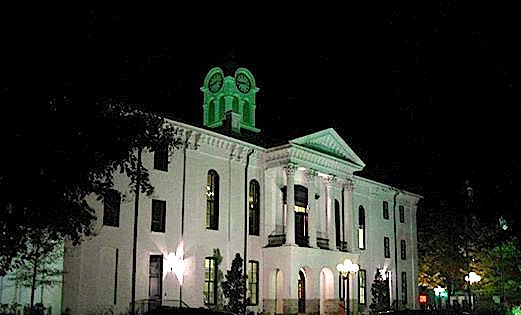
Lafayette County was formed from lands ceded by the Chickasaw in the treaty of Pontotoc Creek in 1832.
The county was organized in 1836, and in 1837 three pioneers — John Martin, John Chisom, and John Craig — purchased land from Hoka, a female Chickasaw landowner, as a site for the town.
During the Civil War, Oxford suffered invasion by federal troops under Major General Andrew Jackson “Whiskey” Smith who burned the buildings in the town square, including the county courthouse.
In the postwar Reconstruction Era, the town recovered slowly, aided by Federal Judge Robert Andrews Hill, who secured funds to build a new courthouse. The original drawings of the second Lafayette County Courthouse, by the architect S. Boling, were signed and dated April 1871.
The present day Lafayette County Courthouse was completed in early 1873 and is one of the oldest in the state in continuous use as a courthouse. The courthouse was extended in 1953, adding on to the point past the two arched windows. The courthouse sits on the Oxford town square, which is the geographic center of Lafayette County, and is surrounded by a variety of gourmet restaurants, home décor shops, upscale clothing boutiques, coffee shops and professional offices.
The Lafayette County Courthouse was declared a National Historic Place on September 23, 1977.
John Cofield is a hottytoddy.com writer and one of Oxford’s leading folk historians. He is the son of renowned university photographer Jack Cofield. His grandfather, Col. J.R Cofield, was William Faulkner’s personal photographer and for decades was Ole Miss yearbook photographer. Cofield attended Ole Miss as well.
Contact John at Johnbcofield@gmail.com
